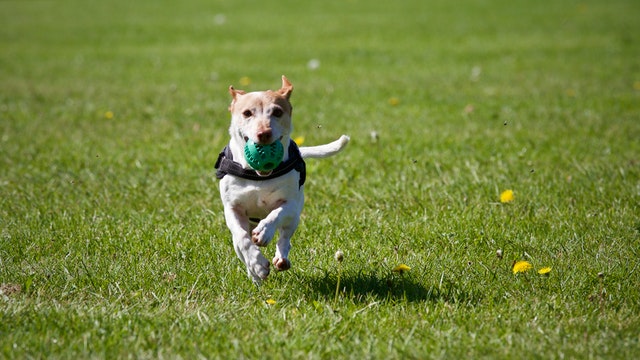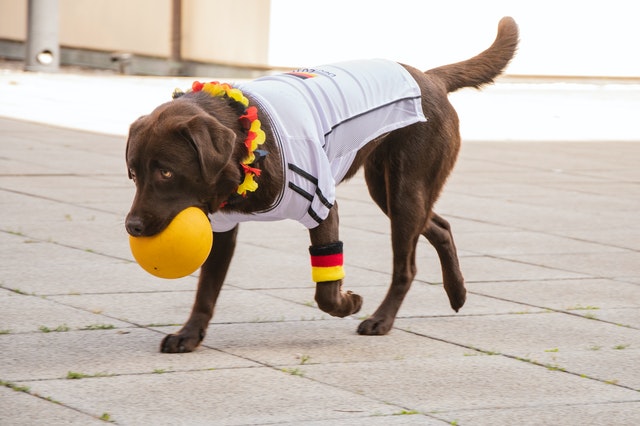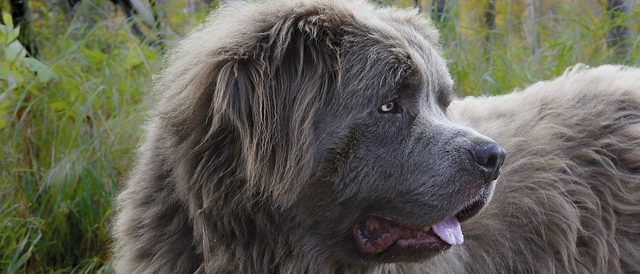Dogs are social beings and one of the ways they develop themselves is through play. It is a juvenile characteristic that is quite pleasant for humans. Playing with your dog regularly will help understand its personality. It will strengthen your bond. Play keeps dogs from getting bored and helps maintain physical health if they are restrained. Well-controlled play allows dogs to use their natural predatory abilities. Finally, play can prevent inappropriate behavior from developing.
What do dogs like to play?
It depends on the dog’s personality. Watch what your dog does when he’s excited. Does your dog chase, grab, or jump over objects? Experiment with a few different toys and with it mimic your dog’s natural play behavior.

Dog games
The games fall into four main categories which are as follows:
• Pulling the rope: the principle being to play pulling with your dog. There are all kinds of them such as knotted balls, pullers, rubber rings or even sausages.
• Hunt and recover: we often talk about throwing games here. You can use a lot of different toys for this category.
• Hide and seek: the principle is to use the dog’s flair. The dog lives in a world of smells. Most dogs love this kind of activity. You can hide treats, toys or hide and have him look for his “treasure”.
• Play only with the owner: you can play without artifice with your dog. Have fun running!
Some dogs will like to bounce the toy and shake it. Others will love to bring it back to you or destroy it.
Whatever toys you use, make sure they are suitable for your dog. Check toys regularly to make sure there are no small parts that could be chewed and swallowed.
Basic rules of the game
For better understanding and to avoid accidents, it is best to master the game with your dog. This avoids excessive surges of excitement which can be uncontrollable. Don’t play brawling games that are too harsh and don’t let your dog chase the children. Both are exciting for your dog. But can encourage unpleasant behavior like biting.
• Before you start playing, make sure your dog is calm. Ask him for a waiting position, such as “sitting”. Keep toys below the waist so as not to encourage your dog to jump.
• Have regular daily play sessions, at home and on the go. This helps maintain a good relationship between you. Keep the sessions short and repeated.
• When playing, use an exciting voice with lots of praise and encouragement. Don’t lie to your dog. He will sense if you are in the present moment with him. Have as much fun as him.
• Let him know when the game is over.
• Put the toys away at the end of each play session. This keeps them interesting. You can, however, choose other games for everyday use.
• Never force your dog to play.
• Never get angry while playing. It is unnecessary and counterproductive.

Teach your dog to play
This section is for dogs who have not learned to play. Your dog may not have learned to play with objects. The following will help you encourage your dog to play with you. Here are my tips:
• Only have one dog in the room to learn to play at a time. You will probably need to get down to ground level and keep an encouraging voice.
• Do not push the toy towards the dog – especially towards the mouth or head. This might scare him, especially if he is already shy in the game. Some dogs don’t dare take the toy if you look at them.
• Gently move the toy on the ground as if to imitate prey. You can tie it to a string or even throw it.
• When your dog catches the toy, encourage him. You can pick up the toy by pulling it gently. Then let your dog win it over to give him confidence.
• Keep the sessions short and repeated.
• For more sensitive dogs who are reluctant to grab a toy, you can use fleece and plush toys. You can also equip yourself with toys, in which you can hide food. Show the toy to your dog. Let him sniff the food, then roll him on the floor. Your dog will follow him and be rewarded by being allowed to chew the food. Your dog will associate the toy with the food and will soon have fun chasing it across the floor.
Tug of war with your dog

Some people avoid playing tug of war. They fear that this will encourage the dog to be aggressive. This is a misconception. Most dogs find tug of war games very interesting. If this is your dog’s favorite game, you can set the rules.
• Put your dog in a waiting position such as sitting.
• Encourage your dog to grab the toy on demand with a “take”.
• When your dog has a good grip on the toy, maintain interest by pulling it a bit evenly. Be careful never to shoot from top to bottom. Indeed, this has adverse effects on the dog’s spine and neck. It is best to pull back and forth or a little left to right.
• Don’t wait until your dog gets too excited at the start. Take the initiative in stopping the game.
• Stop pulling, place your hands at your sides and keep them still.
• Exchange the toy for another toy or treat. Trigger interest in another toy by throwing it into the dog’s line of sight. Positive grip on the collar. So when your hand gets close to the dog’s collar, it will release by conditioning.
• When your dog lets go, praise him by restarting the game.
• Do not remove the toy until you have finished the game. Always reward its release with another reward (treat, moment of freedom, etc.)
• Tell them the end of the game, with a verbal cue like: “it’s over”. This will be the end signal for your dog.
Remember, training should be fun. Don’t hesitate to take a calm walk before a play session to warm up your dog. This will prevent injuries. Once the game is well mastered, it can be used to reward good behavior. If you need more practical advice, consider taking an education course.



